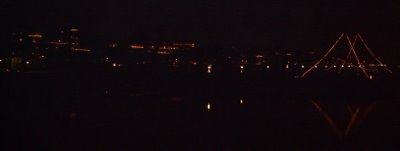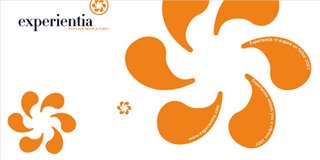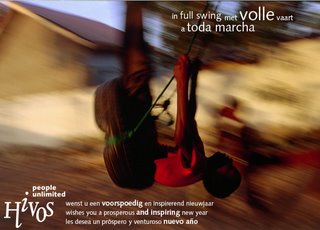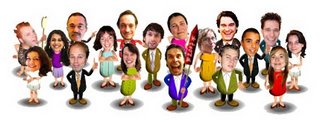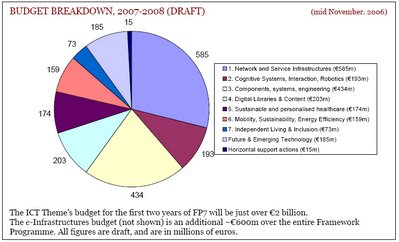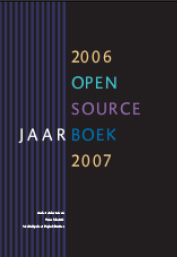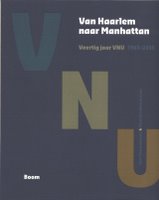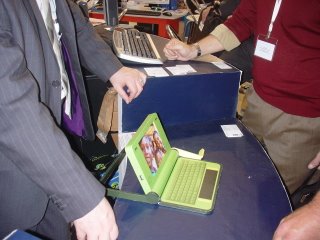The French will continue the European search engine project; the Germans have left the project which was intended to be the European competitor of Google. The German project manager of Bertelsmann and the French project manager on behalf of Thomson could not work together. Germany will continue its own semantic search engine under the name Theseus, while the French will continue with Quaero (Latin for I search).
In April 2005, the German and French heads of State, Jacques Chirac and Gerhard Schröeder, announced their plans to create and launch this search engine through a public-private initiative in order to rival Google. A year later, apart from the French and German governments, many private corporations (such as France Telecom, Thomson, Siemens AG, LTU Technologies) are participating in the Quaero project, as well as numerous research institutes (such as the CNRS and the University of Karlsruhe) and providers of content (including INA and Studio Hamburg). A budget of 250 million euro had been reserved as a start and was going to be upgraded to 400 million euro. Also European contributions through sub projects were also used. However the co-operation between the bi-national project team did not work out. Only sporadically some news was published and there was an awesome silence about the project.
Unlike the existing search engines, Quaero would allow users to conduct searches by entering images (“query images”) and audio components (“query sound clips”), and not just keywords.
It looks like the European Commission is now betting on another search engine builder
Fast as it has granted funding towards the research project the Platform for Search of Audiovisual Resources Across Online Spaces (PHAROS). The project will build a next-generation audiovisual search platform, designed, developed and applied jointly by a global consortium of high-profile academic and industrial players with proven track records in innovation and commercial success.
The mission of PHAROS is to transform audiovisual search from a point-solution search engine model to an integrated search platform paradigm, incorporating future user and search requirements as key design principles. These forward-looking requirements will be defined through collaboration with European and national initiatives, as well as through cooperation with some of the largest and most sophisticated organizations in the media and telecommunications sector. This unified effort will ensure industry relevance and worldwide application reach.
PHAROS involves 13 partners (Ingegneria Informatica SpA, France Telecom, L3S Research Centre at the University of Hannover, Fraunhofer Institute for Digital Media Technology, Ecole Polytechnique Federale de Lausanne, Knowledge Media Institute of The Open University, Fundacio Barcelona Media Universitat Pompeu Fabra, Technical Research Centre of Finland, Circom Regional, Metaware SpA, Web Model, SAIL LABS Technology and FAST) in 9 different countries (Austria, Finland, France, Germany, Italy, Norway, Spain, Switzerland and the UK), including large European players that will help ensure future project sustainability and subject matter experts who will manage highly focused technology components. The development of this advanced multimedia search platform with partners from multiple European countries supports a continued focus on building a technologically-competitive future for the continent.
Private and public organizations consistently find themselves at a loss over how to handle the exploding volume of audiovisual data, formats and technologies. The growth of audiovisual content is driving demand for new services and making audiovisual search one of the major challenges for businesses today.
The PHAROS Search Platform will create a new infrastructure for managing and enabling access to information sources of all types, supporting advanced audiovisual processing, content handling and management that will enhance the control, creation and sharing of rich media content for all users in the value chain. The PHAROS platform will enable organizations with audiovisual content to strengthen and extend product and service offerings by integrating best-of-breed products with advanced search technologies. Ultimately this will produce competitive advantage by enabling organizations to address the full content management processing chain.
The overall impact of PHAROS is expected to be far-reaching. The platform's support of seamless interaction with ^multimedia, awareness of presence, personality and needs, and responsiveness to speech, multilingual and multicultural access will enable long-sought unfettered access to information. The effects of this fundamental shift will be evident across a range of industries and organizations and will create cross-cultural ripple effects for businesses, professionals and citizens.
Personally I give the Fast project more of a chance of producing an audiovisual search engine rather than the now French Quaero consortium and the German Thesaus consortium. Quaero was a consortium set up by politicians. The Pharos project is set up by a successful search engine manufacturer. And forget for the time being any competition with Google, Yahoo or Ask; besides a fine search engine you need a real business proposition.
Tags: searching
RSS feed: http://buziaulane.blogspot.com/rss.xml
Blog Posting Number: 612









